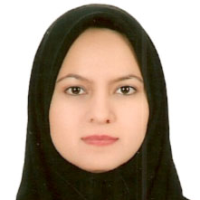Analysis of inbreeding in Karakul sheep breed: Partial inbreeding, Ballou and Kalinowski ancestral inbreeding coefficients
Author(s):
Article Type:
Research/Original Article (دارای رتبه معتبر)
Abstract:
Background and objectives
Inbreeding is the increase in homozygosity of offspring resulted from mating between related animals or animals that have common ancestors. The main effect of inbreeding is decline in performance of inbred animals known as inbreeding depression. The magnitude of inbreeding depression is not the same across the various traits and population. Recent studies revealed that inbreeding depression also shows variation among founders within a population. Variability of inbreeding depression arises when distribution of deleterious recessive alleles among founders are not equal. Furthermore, the detrimental effects of inbreeding can be reduced if deleterious recessive alleles were removed (purged) by selection against homozygotes in earlier generations. Estimating the partial and ancestral inbreeding coefficients makes it possible to assess the balance of distribution of recessive alleles among founders and incidence of purging of deleterious alleles in population. The objective of this study was to estimate wright inbreeding, partial inbreeding, Ballou ancestral inbreeding and Kalinowski ancestral inbreeding coefficients in the breeding flock of Karakul sheep.
Materials and methods
In this study the pedigree file of the breeding flock of Karakul sheep containing 7477 pedigree records collected during 1989-2014 was used to estimate wright inbreeding, partial inbreeding and ancestral inbreeding coefficients of animals. Pedigree completeness index was calculated to evaluate the quality of pedigree. Animals that born in the last 4 years of the pedigree with pedigree completeness index of greater than 0.6 was considered as a reference population to decomposition of the inbreeding to partial inbreeding arises from founders. Ballou ancestral inbreeding of all animals was estimated. Also, inbreeding coefficients of animals were decomposed to the New and Kalinowski ancestral inbreeding.
Results
The mean of wright inbreeding coefficients of animals in all population and reference population were 0.85 and 1.36, respectively. A total of 108 of 280 founder animals (38%) have a positive contribution to the inbreeding of the reference population. Mean and standard deviation of the partial inbreeding coefficients of these 108 animals were 5.19 and 7.37%, respectively. The 10 and 25 founders contributing the most to inbreeding explained a large part of the inbreeding of the reference population (i.e., 42 and 66%, respectively). Mean Ballou ancestral inbreeding of the whole and reference population were 1.17 and 2.12, respectively. Most of the animals in the population have positive Ballou ancestral inbreeding. Kalinowski ancestral inbreeding of animals was low and its mean was 0.07% in the population. Ancestral inbreeding in this population was in accordance with Ballou definition of ancestral inbreeding. Correlation of wright inbreeding coefficient with Ballou ancestral inbreeding, Kalinowski ancestral inbreeding and New inbreeding coefficients was 0.1, 0.37 and 0.99, respectively.
Conclusion
Based on the results of this study, Ballou ancestral inbreeding coefficients of animals in this flock has increasing trend which can lead to purging of deleterious alleles in this population. Therefore, for assessing the incidence of purging of deleterious alleles in this population, estimating of the effects of ancestral inbreeding on reproductive and production traits are suggested. Also, the estimated partial inbreeding coefficients of animals can be used to determine the contribution of each founder to observed inbreeding depression. On the other hand, estimated partial inbreeding coefficients can help to detect founders that carry the deleterious alleles. Then, these information could be used in mating programs so that new born lambs have a less partial inbreeding arises from carrier animals or those animals which have greater contribution to inbreeding depression.Keywords:
Language:
Persian
Published:
Journal of Ruminant Research, Volume:6 Issue: 4, 2019
Pages:
31 to 49
https://magiran.com/p1992151
مقالات دیگری از این نویسنده (گان)
-
A study on the lactation curve characteristics and factors affecting them in dairy cows (case study: industrial dairy herds of Mashhad city)
*, Farshid Saraf, Seyyed Homayoun Farhangfar, Alireza Khanahmadi
Journal of Animal Environment, -
Estimation of (co) variance components and genetic parameters of some growth-related traits in Baluchi sheep considering the effect of sex-linked genes
*, SEYYED HOMAYOUN FARHANGFAR, Mohamadreza Sheikhlou
Journal of Breeding and Improvement of Livestock,


